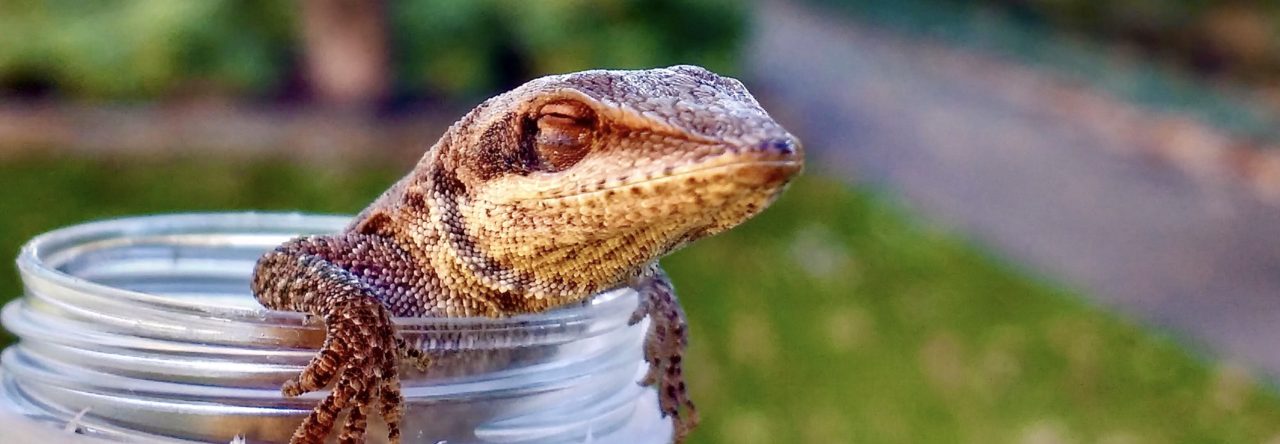
High school students conducting anole research. Read all about it in the author’s post on the paper.
Everyone knows that anoles, like most reptiles, are not good parents. They just drop off the eggs, and that’s that. If they come across their offspring, they might even eat them! Not a paragon of parenthood. But does that mean the anole moms don’t do anything to help their kids? If nothing else, perhaps they could lay their eggs in places that would lead to maximally healthy offspring.
To test this idea, Aaron Reedy and a cast of dozens conducted an experiment in which they gave female brown anoles a choice of nest substrates varying in moisture content to see if they preferentially put eggs in some places over others. Then, they raised the eggs in the different environments to see if it matters.
 The results were clearcut: females prefer to lay eggs in the soil with the highest moisture levels available. And, in turn, it matters: eggs put in such soils (the placement of eggs was randomized after the females laid them) had high hatching success, produced large offspring, and led to an overall increase in offspring survival.
The results were clearcut: females prefer to lay eggs in the soil with the highest moisture levels available. And, in turn, it matters: eggs put in such soils (the placement of eggs was randomized after the females laid them) had high hatching success, produced large offspring, and led to an overall increase in offspring survival.
These results are interesting and in agreement with a variety of studies on other reptiles. What is particularly notable about this research is that it was conducted in a low-income neighborhood city high school science classroom. The first author, Aaron Reedy, was a science teacher (he’s now in grad school at the University of Virginia), and the project was conducted by him and a large number of his high school students. Now, that’s remarkable! Reedy provides an interesting account of how the experiment came to be and what the students thought of it in a post at Scientific American’s website.
This paper also brought to our attention another paper published earlier this year that had eluded AA‘s notice.
Read More










 AA reader, anole scientist, and anole breeder Veronika Holáňová has written a beautiful book on anole husbandry. I can attest that the photos are exquisite, and here’s what she has to say about it: “It is a book for all Anolis lovers who would like to try to keep them in captivity. In that book I have my experiences with keeping different anole species after many years :-).” The only catch is that it is in Czech, though Veronika says that “maybe one day it could be in English too.” Let’s hope! The book has a
AA reader, anole scientist, and anole breeder Veronika Holáňová has written a beautiful book on anole husbandry. I can attest that the photos are exquisite, and here’s what she has to say about it: “It is a book for all Anolis lovers who would like to try to keep them in captivity. In that book I have my experiences with keeping different anole species after many years :-).” The only catch is that it is in Czech, though Veronika says that “maybe one day it could be in English too.” Let’s hope! The book has a 
